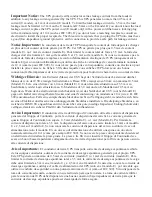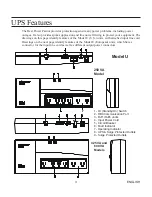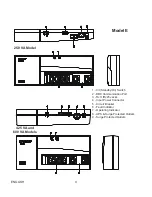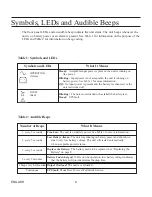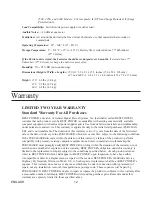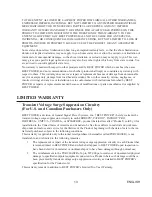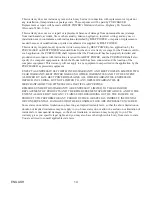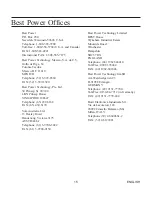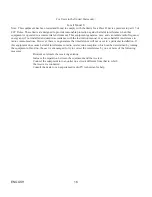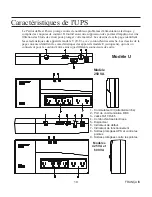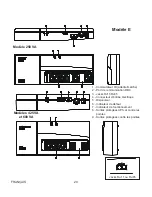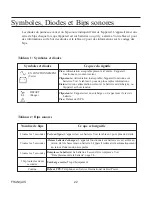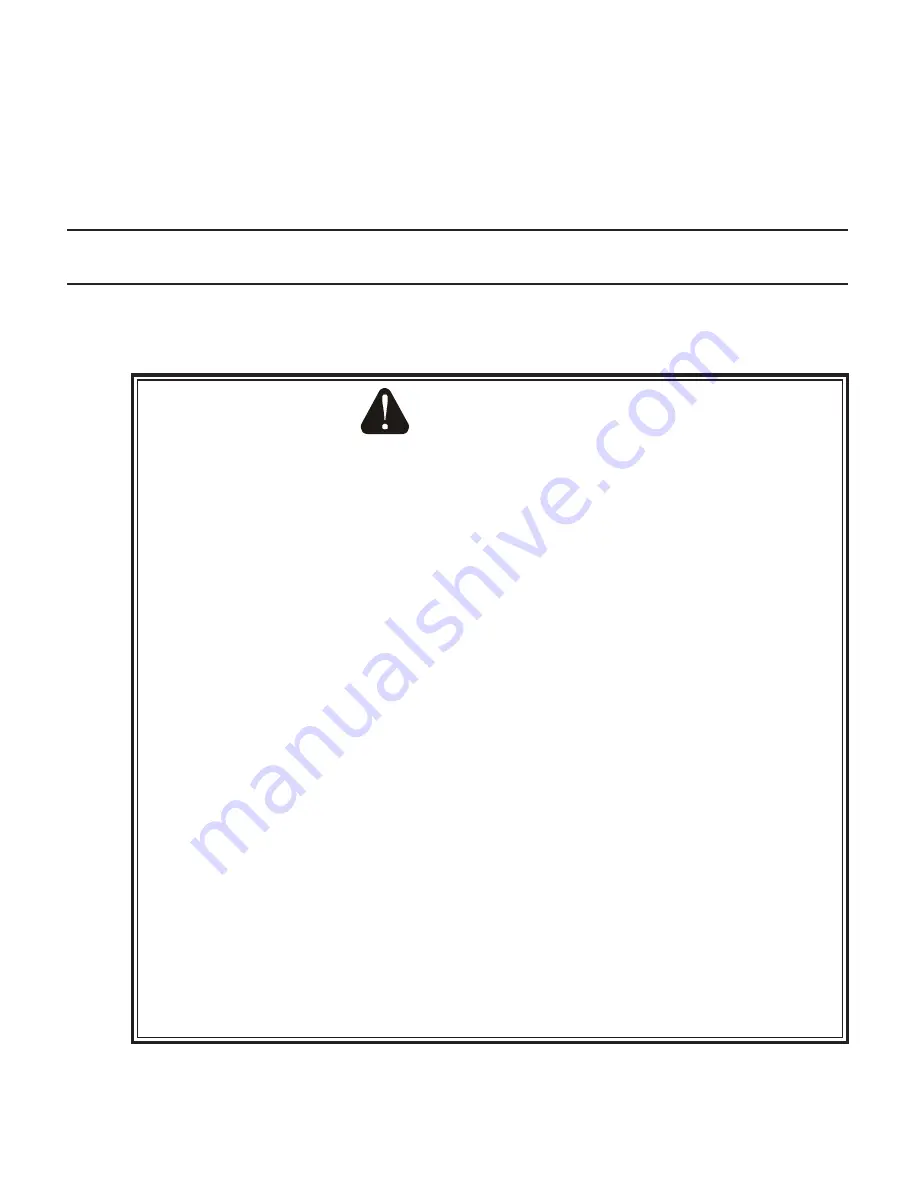
8
ENGLISH
If you need further assistance, phone Best Power’s Worldwide Service or your local Best Power
office. Please have the model number and serial number (located on the rear of the unit)
available. If the unit must be returned, Best Power will give you a Return Materials
Authorization (RMA) number. Phone Best Power for an RMA number before returning the unit
for any reason.
Replacing the Battery
(model U only)
Patriot’s battery is user-replaceable. Before replacing the battery, make sure that you read the
safety information below.
CAUTION!
The battery used in the UPS can produce dangerous voltage and high current. Therefore, the
battery may cause severe injury if the terminals contact a tool or other metal object. Be very
careful to avoid electrical shock and burns from contacting terminals while you replace the
battery.
Batteries contain caustic acids and toxic materials and can rupture or leak if mistreated.
Remove rings and metal wristwatches or other jewelry. Do not carry metal objects in your
pockets: these objects could fall into the UPS.
Never allow any tool to contact both battery terminals. Do not lay tools or metal parts on top
of batteries.
To ensure continued superior performance of your UPS and to maintain proper charger
operation, you must replace the UPS battery with the same type of battery: valve-regulated,
low maintenance. The replacement battery must have the same voltage and ampere-hour
rating as the original battery.
Assume that old batteries are fully charged. Use the same precautions you would use when
handling a new battery. Do not short battery terminals with a cable or tool! Batteries contain
lead. Many areas have regulations about disposing of used batteries. Please dispose of old
batteries properly. DO NOT dispose of batteries in a fire because the batteries could explode.
Do not open or mutilate batteries. Released electrolyte is harmful to the skin and eyes. It may
be toxic.
This product may produce ozone. Take precautions to ensure that the concentration of ozone
is limited to a safe value (0.1 ppm {0.2 mg / m
3
} calculated as an 8-hour time-weighted
average).


